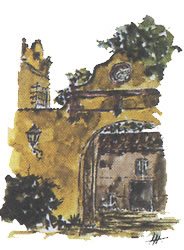ISO 20645: 2005. Evaluation of antibacterial activity in textile tissues. Diffusion test on agar plate.
Test accredited by ENAC (Spanish National Accreditation Entity).
This standard describes a method to evaluate the effect of antibacterial treatments applied to tissues. The application of an antimicrobial to a textile can prevent bacterial growth and reduce the effects of microorganisms such as biodeterioration and odors generated by microorganisms. The method is applicable to fabrics made of hydrophilic materials, permeable to air, with hygienic finishes or with antibacterial products incorporated in the fiber. This method is not suitable for testing textiles subjected to antibacterial treatments that react with agar.
In this procedure, textile samples are tested placed between two agar layers in Petri dishes. The lower layer corresponds to a medium free of bacteria and the upper layer incorporates each of the two obligate bacteria, a gram-positive bacterium Staphylococcus aureus, and a gram-negative bacterium, Escherichia coli or Klebsiella pneumoniae, although depending on the field of application and composition of the textile, the spectrum of test bacteria can be extended. The textile products should be tested on both sides, evaluating the antimicrobial activity in area of contact between the agar and the textile sample, by the appearance, where appropriate, of an area of inhibition around the textile fabric. The best result is obtained when there is no growth in the contact zone, and a zone of inhibition greater than 1 mm is observed. A satisfactory result should show at least the absence of growth in the area of contact of the agar with the textile fabric. The minimum limit of efficacy is established by the presence of isolated colonies in the contact zone, with almost totally suppressed growth. In order to consider the antibacterial treatment as satisfactory, it must present a satisfactory result with both, the gram positive and gram-negative bacteria, included in the test.



